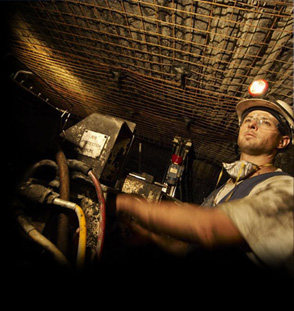Outburst has been defined as a spontaneous ejection of gas and coal from the solid face, where the gas is a mixture of methane and carbon dioxide.
This definition is questioned in the use of the term "spontaneous" as this suggests an outburst occurs without triggering, when an outburst can be provoked with the use of explosives or during the cutting of coal. Thus, outbursts have also been defined as a phenomenon characterised by ejection from the solid face into the mine as a mixture of broken rock and gas.
Outbursts are known to originate in the upper section
of the working face and may result in a cavity in and around the face.
Outbursts usually occur from fresh, gassy, high rank coal during mining,
especially during drivage and often but not always in the vicinity of geologic
disturbances, faults and dykes. In some cases these outbursts include large
volumes of a few tonnes of rock and a few hundred thousand cubic metres
of gas.
The gases involved in outburst are generally methane and
carbon dioxide, but there are also cases of nitrogen gas being the predominant
outburst fuel. These gases when ejected not only cause injury to workers
and damage to equipment around the working face, but also cause the mine
atmosphere to become toxic for the workers to breathe and can create an
explosive gas combination.

Disclaimer
The material contained in the website is compiled from various sources ranging from published documents, published research and personal experience. Every effort has been made to ensure the materials reported are appropriately sourced.
Also every effort has been made and all reasonable care taken to ensure the accuracy of the material reported on the website.
The University of Wollongong and the development team shall in no way be responsible or liable, directly or indirectly, for any damage caused to property or persons by the information provided or any content used or linked from the Outburst site.